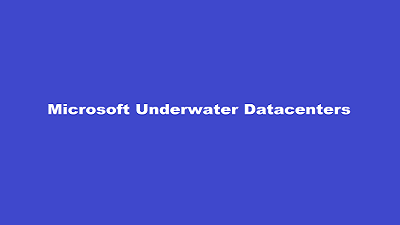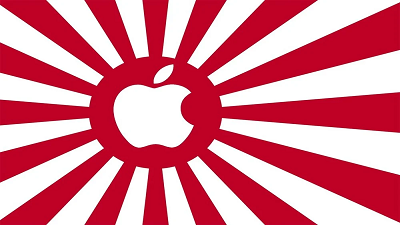|
Earlier this summer, marine specialists reeled up a shipping-container-size datacenter coated in algae, barnacles, and sea anemones from the seafloor off Scotland’s Orkney Islands. The retrieval launched the final phase of a years-long effort that proved the concept of underwater datacenters is feasible, as well as logistically, environmentally, and economically practical. Microsoft’s Project Natick team deployed the Northern Isles datacenter 117 feet deep to the seafloor in spring 2018. For the next two years, team members tested and monitored the performance and reliability of the datacenter’s servers. The team hypothesized that a sealed container on the ocean floor could provide ways to improve the overall reliability of data centers. On land, corrosion from oxygen and humidity, temperature fluctuations, and bumps and jostles from people who replace broken components are all variables that can contribute to equipment failure. The Northern Isles deployment confirmed their hypothesis, which could have implications for data centers on land. Lessons learned from Project Natick also are informing Microsoft’s datacenter sustainability strategy around energy, waste, and water, said Ben Cutler, a project manager in Microsoft’s Special Projects research group who leads Project Natick. What’s more, he added, the proven reliability of underwater datacenters has prompted discussions with a Microsoft team in Azure that’s looking to serve customers who need to deploy and operate tactical and critical datacenters anywhere in the world. “We are populating the globe with edge devices, large and small,” said William Chappell, vice president of mission systems for Azure. “To learn how to make data centers reliable enough not to need human touch is a dream of ours.” The underwater datacenter concept splashed onto the scene at Microsoft in 2014 during ThinkWeek, an event that gathers employees to share out-of-the-box ideas. The concept was considered a potential way to provide lightning-quick cloud services to coastal populations and save energy. More than half the world’s population lives within 120 miles of the coast. By putting datacenters underwater near coastal cities, data would have a short distance to travel, leading to fast and smooth web surfing, video streaming, and game playing. The consistently cool subsurface seas also allow for energy-efficient datacenter designs. For example, they can leverage heat-exchange plumbing such as that found on submarines. Microsoft’s Project Natick team proved the underwater datacenter concept was feasible during a 105-day deployment in the Pacific Ocean in 2015. Phase II of the project included contracting with marine specialists in logistics, shipbuilding, and renewable energy to show that the concept is also practical. “We are now at the point of trying to harness what we have done as opposed to feeling the need to go and prove out some more,” Cutler said. “We have done what we need to do. Natick is a key building block for the company to use if it is appropriate.” We have pictures, videos, and more posted on OUR Forum. Apple revised its App Store guidelines on Friday ahead of the release of iOS 14, the latest version of the iPhone operating system, which is expected later this month. Apple’s employees use these guidelines to approve or deny apps and updates on the App Store. Those rules have come under intense scrutiny in recent weeks from app makers who argue iPhone maker has too much control over what software runs on iPhones and how Apple takes a cut of payments from those apps. In particular, Epic Games, the maker of Fortnite, is in a bitter legal battle with Apple over several of its guidelines, including its requirement to use in-app purchases for digital products. Apple removed Fortnite from its app store last month. One major update on Friday relates to game streaming services. Microsoft and Facebook have publicly said in recent months that Apple’s rules have restricted what their gaming apps can do on iPhones and iPads. Microsoft’s xCloud service isn’t available on iOS, and Facebook’s gaming app lacks games on iPhones. Apple now says that game streaming services, such as Google Stadia and Microsoft xCloud, are explicitly permitted. But there are conditions: Games offered in the service need to be downloaded directly from the App Store, not from an all-in-one app. App makers are permitted to release a so-called “catalog app” that links to other games in the service, but each game will need to be an individual app. Apple’s rules mean that if a streaming game service has 100 games, then each of those games will need an individual App Store listing as well as a developer relationship with Apple. The individual games also have to have some basic functionality when they’re downloaded. All the games and the stores need to offer in-app purchases using Apple’s payment processing system, under which Apple usually takes 30% of revenue. “This remains a bad experience for customers. Gamers want to jump directly into a game from their curated catalog within one app just like they do with movies or songs, and not be forced to download over 100 apps to play individual games from the cloud,” a Microsoft representative said in a statement. A Google representative declined to comment. The rules underscore the tension between Apple’s control of its platform, which it says is for safety and security reasons, and emerging gaming services considered by many to be the future of the gaming industry. Gaming streaming services want to act as a platform for game makers, such as approving individual games and deciding which games to offer, but Apple wants the streaming services to act more like a bundle of games and says it will need to review each individual game. Apple does not have a cloud gaming service, but it does sell a subscription bundle of iOS games called Apple Arcade. Another change relates to in-person classes purchased inside an iPhone app. This spring, amid the pandemic, several companies that previously enabled users to book in-person products, like Classpass, started offering virtual classes. Apple’s rules previously said that virtual classes were required to use Apple’s in-app payment process. Apple’s new guidelines say that one-on-one in-person virtual classes, like fitness training, can bypass Apple for payment, but classes, where one instructor is teaching more a class with multiple people, will still require apps to use Apple’s in-app purchases. For more turn to OUR FORUM. Epic Games Inc.’s decision to sue Apple Inc. over its mobile store practices has sparked new scrutiny in the massive Japanese gaming market, prompting complaints and questions about how to counter the tech giant’s dominance. While Epic, publisher of the hit title Fortnite, focuses on the 30% revenue cut app stores typically take, Japanese game studios have broader concerns. They have long been unhappy with what they see as Apple’s inconsistent enforcement of its own App Store guidelines, unpredictable content decisions, and lapses in communication, according to more than a dozen people involved in the matter. Japan’s antitrust regulator said it will step up attention to the iPhone maker’s practices in the wake of the high-stakes legal clash. And in rare cases, prominent executives are beginning to speak out after staying silent out of fear of reprisal. “I want from the bottom of my heart Epic to win,” Hironao Kunimitsu, founder, and chairman of Tokyo-based mobile game maker Gumi Inc. wrote on his Facebook page. Apple and Google hold a duopoly over the mobile app market outside China. Any publisher that wants a game to be played on iPhones or Android devices is effectively forced to distribute it via their app stores, sharing revenue from an initial purchase and future, related items. Epic, whose Fortnite generates more than $1 billion annually from in-game purchases of virtual cosmetics and extras, sued both companies for what it considers excessive fees and for the right to sell game extras directly to players. Apple and Google have disputed those charges in court. The iPhone maker argues its cut is justified by its provision of security, development support, and an audience of a billion users. The iPhone is a huge revenue driver for game creators in Japan, including established names like Square Enix Holdings Co., which gets 40% of its group revenue from smartphone games, and Bandai Namco Holdings Inc. Sony Corp. has a multibillion-dollar mobile hit called Fate/Grand Order. With 702,000 registered developers, Japan is home to one of the most creative developer communities. A recent study commissioned by Apple estimated the App Store ecosystem in Japan generated $37 billion in billings and sales in 2019 -- $11 billion in digital goods and services, $24 billion via physical goods and services, and $2 billion from in-app advertising. Read more on OUR FORUM. |
Latest Articles
|


